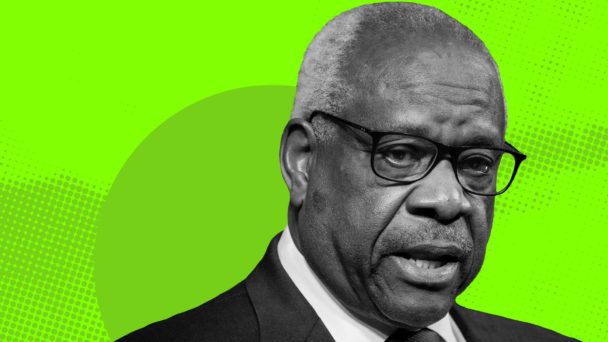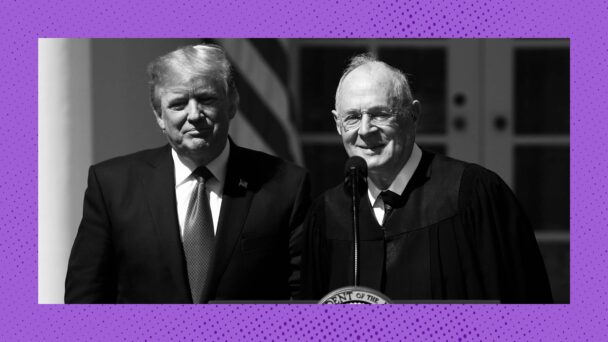Supreme Court Justice Robert Jackson once wrote: “We are not final because we are infallible, but we are infallible only because we are final.” Yet the Court’s decisions are final only because the American people and political institutions have been treating them that way. It is now time to rethink that treatment.
The current Court is a radical political institution. In Dobbs v. Jackson Women’s Health Organization, by a six-to-three vote, it robbed women of a right they had possessed for at least half a century, depriving them of the power to make their own informed decisions regarding the termination of a pregnancy.
The same six justices who jettisoned Roe v. Wade also reversed the Court’s 1984 decision that created what was known as the Chevron doctrine, which recognized that specialists at administrative agencies have greater expertise to address problems ranging from air and water pollution to food and drug safety than do federal judges. Yet now that Chevron has been overruled by Loper Bright Enterprises v. Raimondo, federal courts will no longer defer to scientists or experts when it comes to interpreting ambiguous statutes. The anti-intellectualism in American life that the political scientist Richard Hofstadter identified in 1963 has taken over the judicial branch.
And most recently of all, in Trump v. United States, the Court ruled for the first time in history that the president is above the law and not subject to criminal prosecution for a wide range of activities he (or she) might carry out while in office.
Historically, deference to the Court’s view of what the Constitution means has been rooted in two related beliefs: first, that the Court is fundamentally different from the two political branches of government; and second, that because it adheres to perdurable principles rather than transient political sentiment, its judgments warrant respect—not necessarily because of the outcome in any given case, but because of the process of arriving at that outcome. From the time of Marbury v. Madison in 1803, which articulated the principle of judicial review, the Court itself, from its most conservative to its most liberal members, has protected the vitality of both these propositions. It has been precisely their validity that has provided the structural underpinnings of the crucial idea that the Court’s decisions are final even when they are fallible.
Now, the ostensible truth of these propositions has crumbled. Alexander Hamilton wrote in Federalist No. 78 that the Supreme Court is the least dangerous of the three branches of government, yet in today’s world, where the Court’s deeply fallible rulings hold sway even though that Court has lost it moral and intellectual authority, it is actually the most dangerous branch. In 2022, polling showed that fewer that 1 in 5 Americans had confidence in the Court. Its arrogation of power to itself especially demands correction because the current Court, for only the second time in U.S. history, consists of a majority of justices who were appointed by Presidents who first took office despite losing the popular vote. Thus, while the Court has never been more powerful, it has also never been less democratic.
It is therefore time to ask this question: What would it mean to say that the Supreme Court does not have the final word on what the Constitution means?

(Photo by Alex Wong/Getty Images)
There are at least three avenues for changing the Court’s status. First, Article V of the Constitution allows amendments to the Constitution. Second, Congress could act. It could, for example, place substantive restrictions on what kinds of cases the Court may hear, or it might require that some decisions be effective only if they receive a supermajority vote from the Court (perhaps a 6-3 or even 7-2 vote). Yet another approach would allow Congress to override Supreme Court decisions, either by simple majority or supermajority vote.
But amending the Constitution is too tedious to be a feasible approach, and a number of factors have made Congress effectively nonfunctional. Which leaves the third modality: unilateral action by the executive branch. The president could simply decline to follow decisions he or she deems unsound.
Consider, for example, the recent case of Biden v. Nebraska. The same six justices who just granted Trump unprecedented immunity sided with the half-dozen states who insisted the Biden Administration had no authority to forgive roughly $430 billion in student loans. Freed of the myth that the Court’s decisions are final, President Joe Biden could have announced that he had studied the Court’s opinion, found it to be flawed, and would therefore move forward with loan forgiveness program anyway. The same approach would work in other contexts as well. For example, a decision holding the Deferred Action for Childhood Arrivals program or the Affordable Care Act unconstitutional would similarly be advisory, allowing the president to continue to implement them anyway.
Two concerns with this proposal must be acknowledged. First, cases involving acts by the executive branch, such as student debt forgiveness or immigration enforcement decisions, are relatively simple. Other contexts—including challenges brought by individuals against states for intruding on their rights, as well as conflicts between the states and the federal government—present greater complexity.
And it may well be the case that, without congressional action, there remains a broad domain of decisions where even the Court’s most egregiously fallible judgments will remain final not because they are sound, but because the cost of the disregarding them is too high. If the Court, for example, had ruled that Texas could patrol the southern border and bar federal officials from the area, that decision would have represented an outrageous return to John C. Calhoun’s pre-Civil War idea that states can nullify federal law—but at the same time, a presidential decision to ignore such a ruling could ignite a new one.
Second, and more worrisome, is the possibility that the current Court, as infirm as its reputation and judgment are, might still in some cases be more protective of historically disfavored groups than the president. A new paradigm that treats Supreme Court decisions pertaining to exercises of executive power might look appealing if the issue involves Biden’s provision of economic relief to the middle class. But it would look very different if a future president were (for example) to order racial- or gender-based segregation in the military. If such an executive order were challenged on Equal Protection grounds, and the Court deemed the order unconstitutional, what if the president insisted on implementing it anyway?

(Photo by Celal Gunes/Anadolu Agency via Getty Images)
There is no way to ensure that a regime whereby Supreme Court decisions are merely advisory will never have pernicious consequences. The question, however, is whether that risk is higher or lower than the alternative. In my view, it is reasonable to believe that the risk of shifting power away from the Court is lower than the risk of continuing to defer to ideologically driven and fallible judgments for at least two reasons. A first-term president who insists on abridging individual rights can still be held accountable, either by the voters or by Congress. And even a second-term president is subject to impeachment or congressional override. The Court is not the only institution capable of imposing consequences on elected officials who abuse their power.
To be sure, those mechanisms of undoing executive action are cumbersome and inefficient. But they at least have the virtue of being democratic. And I, for one, would prefer the tortoise-like pace of democracy to the hare of autocracy, especially given that autocrats care principally about themselves, while democrats protect the citizenry.
Rejecting the view that the Supreme Court’s judgments are always authoritative is not a panacea, but it is nevertheless superior to treating the decisions of a compromised and antidemocratic institution as final. The American people did not vote for the members of this Court, nor, perhaps more importantly, did they vote for the presidents who appointed six of the nine. Decisions that emanating from such an institution cannot be justified either morally or politically.
It will take time to fix all the problems associated with an imperial Court. But the first step is to recognize that it is possible for the executive branch to stop treating it as such, and to stop doing so immediately.






